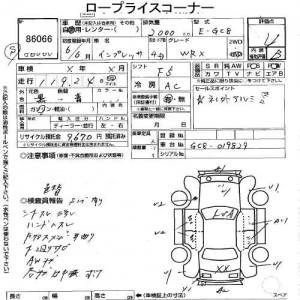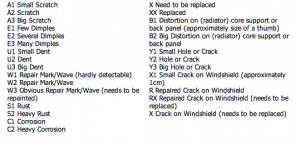Learning how Auctions work
To bid on cars in Japan, you need an account with someone who has a bidding license. If you look back to the video walking through an auction house, you'll see that you need a special license to bid on the cars. There's a number of sites like this. Brave Auto international uses common software that's used to peruse the cars for sale, and J-Cars uses some other software.
On these site you'll see all the cars that are available to bid on. There are starting bids, and usually an average price shown to give you an idea what the car should go for. The average price is very misleading. The average price (depending on the site) is for cars of any grade that have approximately the same milage. Literally, that's cars that are new, to cars that have no front end. Ask your auction agent what the car you're looking for might usually go for. The datasheet shown is a WRX that's in great shape with 120000km, and the average price is says ~$400 which is totally off base.
What does it mean when a car doesn't sell? The starting bid has nothing in common with the seller's reserve price. Sometimes the reserve can be really high (higher than it should be?), but usually it's quite low.
All the cars in the auction are graded, but with varying degrees of negativity. The cars are graded out of 5, with 5 being the best. In general, you'll never see a 15 year old car with a grade greater than 4.
The exterior, and sometimes the interior, are then graded. The interior and exterior get a letter grade, from A to... D? I wouldn't go lower than a C, so I don't know.
The datasheet above is 4 B, which is a car in very good condition. The rest of the Datasheet changes from auction to auction. The 'car breakdown' is a very good way of discovering what kind of dings and dents the car has. The common markings can be seen in the picture to the left.
You'll need someone who speaks Japanese to translate the sheet for you. Some auction agents charge for this, some don't. If there's any uncommon markings on the sheet, the auction agent will (should) translate that for you too.
This is just an introduction... I'm sure there'll be more later! There's still shipping, which... well, is kind of a big deal when you buy a car on a different continent.
rob



Leave a comment